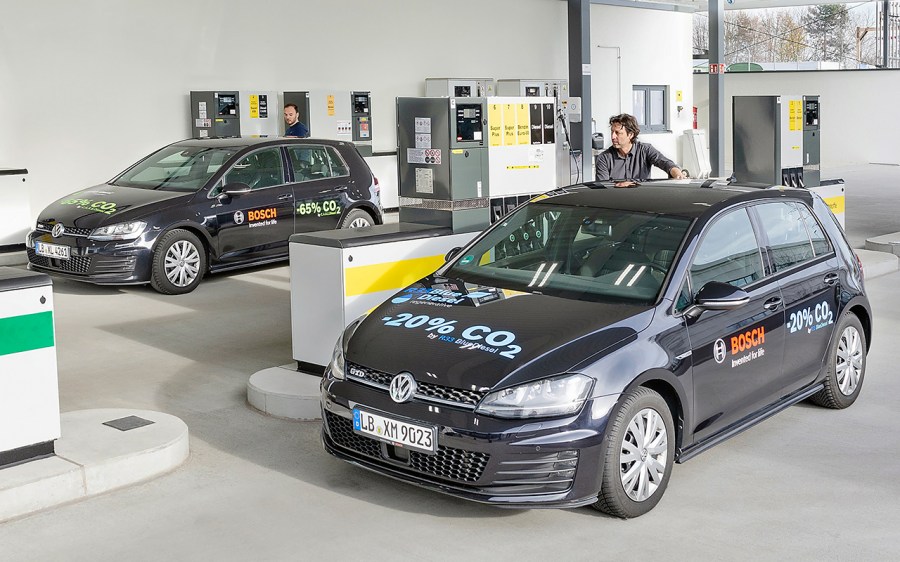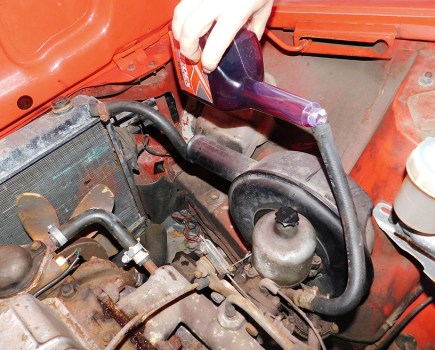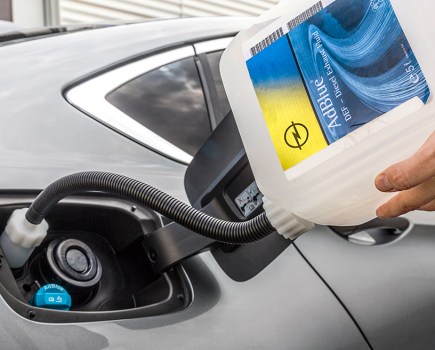As the wave of new EVs shows no sign of slowing down, can synthetic fuels prolong the life of internal combustion?
Words: Chris Randall
While most carmakers seem to be betting the farm on battery electric vehicles, there are one or two others that are casting the net a little wider when it comes to powering the cars we’ll be driving in the not-too-distant future. Hydrogen is one technology being explored, but another is the development of synthetic fuels (often referred to as ‘E Fuel’) which is what we’re taking a closer look at here.
Essentially what we’re talking about is the production of a man-made hydrocarbon fuel, one that would not only be CO2-neutral but, just as importantly to some, would allow the continued use of the internal combustion engine. Given its development over more than a century it is easy to understand why some in the industry aren’t convinced that throwing it all away in the pursuit of electric vehicles isn’t entirely the right way to go. At the very least the use of synthetic fuels could potentially complement other technologies, extending the life of traditional engines for some decades to come. And there are other potential benefits, not least of which is the ability for it to be distributed using the existing refuelling infrastructure.
How is synthetic fuel made?
The basic process involves using sustainably-generated electricity that, via electrolysis, splits water into hydrogen and oxygen. CO2 from the air is then synthesised with the hydrogen to produce the synthetic fuel. It sounds relatively simple, but there are a number of obstacles that could stand in the way of it becoming a mainstream solution. For one thing it’s an energy-intensive process, and critics argue that its inefficiency means it would be better to use the electricity to power vehicles directly, rather than use it to produce another type of fuel.
Capturing the CO2 from the air isn’t cheap or straightforward, either – and then there’s the matter of producing the synthetic fuel in significant quantities. In part this could be overcome by blending it with traditional fuel in increasing levels, which would bring down the cost as production ramps up but that’s a long-term aim that’s unlikely to satisfy the pressing need to improve air quality and reduce the impact on the climate of vehicle pollutants. As for cost, Bosch have said that a ‘renewable sustainable fuel’ could cost just €1.20 per litre by 2030, and less by 2050, but others strongly dispute such predictions saying it’s likely be closer to three times that amount, if not more.
Returning to the issue of quantity, Porsche is one car company that is pushing ahead with concerted exploration of the technology, investing around €20m in a project with Siemens Energy. Construction of a plant in Punta Arenas, Chile began in September last year and Porsche expect it could produce 130,000 litres of synthetic fuel by the end of this year, rising to 55m litres in 2024 and half a billion litres by 2026. Those sound like fairly impressive numbers until you consider that the UK currently consumes around 45 billion litres of petrol and diesel every year.
At present the company plans to use the fuel in motorsport and in the vehicles run at its Porsche Experience Centres, but it would appear that wider scale use in road vehicles is some way off.
Mazda, too, think it worth considering and in February last year they became the first car maker to join the eFuel Alliance, an organisation that brings together companies looking to explore and promote the technology.

Commenting on being the first manufacturer to join the Alliance, Wojciech Halarewicz, Vice President Communications & Public Affairs at Mazda Motor Europe GmbH said: “We believe that with the necessary investment, CO2-neutral e-fuels and hydrogen will make a credible and real contribution to emissions reduction – not only for newly registered cars but for the current fleet. This would open up a second and faster route to achieving climate neutrality in transport, hand-in-hand with continued electrification.” In fact, they have fully embraced the concept and one alternative avenue they’ve been exploring is a 100% bio-based fuel made from used cooking oil and microalgae – essentially a bio-diesel – and they proved the concept by running a car on it in a domestic championship race.
Mazda isn’t the only firm to have shown an interest. One example is Ferrari, although it remains tight lipped about any future plans, while Audi told us that while it has considered the possibility, it won’t be pursuing it any further; given the slew of EVs it has already launched, with plenty more in the pipeline, that’s understandable. However, it’s reasonable to assume that other car makers will at least have made some preliminary investigations into the technology.
But it’s not just car makers that are involved with British company, Zero Petroleum, convinced of its potential in a range of transport applications. Founded by former F1 engineer, Paddy Lowe, and Professor Nilay Shah, Head of Chemical Engineering at Imperial College London, there’s clearly no shortage of expertise. And they’ve already had some success – in November last year an RAF aircraft become the first flight in the world to take place using the fuel. It’s promising, then, but still some way from a definitive outcome as far as road cars are concerned.
Synthetic fuels and the environment
The one issue we’ve not really tackled so far is that of environmental benefits, perhaps because it is something of a minefield. Proponents of the technology say that, aside from the CO2-neutrality, synthetic fuel burns much more cleanly and produces less in the way of nitrogen oxides and particulates. Bosch have said that 2.8 gigatons of CO2 could be saved by 2050, with Porsche quoting a reduction of CO2 emissions of 85%.
As you’d expect it’s not hard to find reports disputing such figures. Transport & Environment – an organisation that campaigns for clean transport – commissioned laboratory tests that aimed to replicate the current emissions testing regime whilst comparing synthetic fuel with petrol (noting that it had to produce blends itself as actual e-fuel wasn’t available). Amongst their findings they reported that there was no difference in NOx emissions; that particulate emissions were substantially reduced; but that carbon monoxide output was higher. It appears that any debate as to the benefits of synthetic fuel is likely to rumble on for some time.
Our verdict
All of which leaves us where, exactly? Synthetic fuels are a nascent technology, and while a number of companies are clearly committed to exploring the idea, there is still quite some way to go before synthetic fuel could be considered for mass adoption by the current road car fleet. Numerous obstacles will need to be overcome, from cost to sufficient scale, plus it would appear that the promises around environmental benefits aren’t necessarily as iron-clad as they might seem.
It’s easy to understand why the possibility of keeping internal combustion engines in production is an enticing one for car makers, but is it likely? The jury is still out. As far as this particular writer is concerned, though, exploring alternative solutions that could complement electrification rather than throwing all of the automotive eggs into the EV basket seems eminently sensible. And if some form of synthetic fuel could, in future, be a realistic part of the mix then to dismiss it would seem short-sighted. Whether it will – or, indeed, can – happen quickly enough is another matter.






